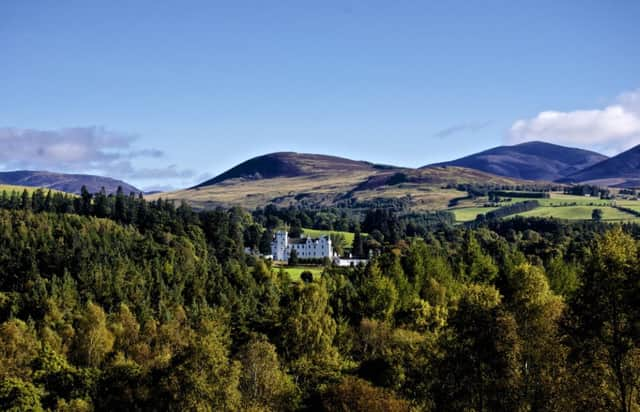Small is beautiful for a renewable future


Scotland’s natural energy resources have often led to politicians and media dubbing the nation the Saudi Arabia of renewables, at the forefront of a green revolution.
This has been assisted in no small part by the Scottish Government’s desire to see 100 per cent of electricity generated by renewable sources by 2020.
Advertisement
Hide AdAdvertisement
Hide AdYet, it’s not just the government who are striving to ensure sustainable energy resources for subsequent generations – landowners and rural businesses are determined to play their part in helping the government meet its 2020 target.
According to research commissioned by Scottish Land & Estates, across 277 estates that participated in our study, there are plans to introduce or increase renewable energy projects by more than 300 installations.
Overall, the research found that nearly 40 per cent of the estates who took part in the research were currently involved in the generation of renewable energy, either as a principal or as host for a third party business. Hydro power featured prominently amongst respondents, with plans to construct 55 new installations on estates across Scotland whilst increasing the capacity on 24 existing schemes.
Sixty years ago the cry was “power from the glens” as Scotland’s rivers were harnessed – this time, it is the turn of the burns and smaller rivers to make their contribution.
As anyone who has embraced the nation’s great outdoors will know, four seasons in one day are a common occurrence – even in summer. However, this is the silver lining that can present plenty of opportunities for rural businesses to develop schemes that use the country’s natural resources and deliver sustainable energy for homes and businesses.
One such hydro installation has recently been unveiled at one of Scotland’s best known Highland estates, Atholl.
The estate is centred around the famous landmark of Blair Castle, where Mary Queen of Scots and Queen Victoria both stayed – albeit almost three centuries apart. Now, thanks to the recommissioning of an Edwardian hydro scheme, it has become one of the first castles in Scotland to generate its own electricity.
Electricity was brought to Blair Castle in 1908, by harnessing the water which had once powered an old sawmill. However, with the arrival of the National Grid in 1951, the scheme was decommissioned and the original three turbines were sold for scrap. But over a century on – and after discovering that the original pipe from 1908 was still in good working order – the project team constructed a new intake and the existing powerhouse was refurbished with a new 84kW turbine. Now, at full design flow, 331,200 litres of water pass through the turbine every hour, enabling the castle to be self-sustaining. During low castle electricity demand periods, power will also be exported to the National Grid, achieving both financial and environmental benefits to the estate and surrounding area.
Advertisement
Hide AdAdvertisement
Hide AdSimilar ventures are under way across the country. In September, construction of the Neaty hydro project on the Culligran estate in Glen Strathfarrar was completed. This 700kW run-of-the-river scheme – aptly titled Torrential Potential – is an example of the landowner using the security of an estate to form a joint venture with a hydro turbine manufacturer and investor. Also towards the end of last year, a feasibility study was commissioned to develop a hydro-electricity project in order to raise funds jointly for the Arrochar and Tarbet and Luss and Arden communities. The project, based on the An T-Sreang above Arrochar, was initiated by the area’s community development trusts, with Luss Estates committed to providing land rights as well as practical support. And just last month, a new 465kW hydro scheme was opened on the Sallachan burn, north-west of Lochaline on the Sound of Mull, with Ardtornish estate, Morvern Community Development Company and Morvern Community Trust all partners in the project.
Such schemes demonstrate how rural businesses are Helping It Happen – a campaign we launched to highlight the key role played by estates in enabling and supporting success in rural areas – with jobs being created in rural areas and government meeting its own green credentials target.
However, estates can do and want to do more. Not only can hydro schemes be hugely beneficial to local communities but their low environmental impact and long life – 100 years of operation is possible – are greatly adding to their acceptance in the planning process. But despite the government’s undoubted commitment to carbon-neutral power, red tape can often hinder progress. Estates looking to build such schemes often have to contend with a feed-in tariff that fluctuates, causing problems with finance from banks who dislike uncertainty.
Yet other problems persist beyond finance. Rather than one agency working with the estate to oversee the creation of a new scheme, different demands from various bodies through the consultation process can often render what should be a good scheme a non-starter. Coupled with distribution problems – where power companies can’t provide a grid connection date – issues can mount before the idea can truly get off the ground.
There was been little doubt that Scotland’s renewable industry has been a success over the past five years and the commitment of government to the sector has helped. Scotland’s estates and rural businesses have played their part in helping drive forward this sector and with the correct co-operation, there is little doubt that innovative projects such as the one at Blair Castle can start to flow more freely and become a steady stream as we progress towards the target year of 2020.
• Anne Gray is policy officer (environment) at Scottish Land & Estates www.scottishlandandestates.co.uk
SEE ALSO